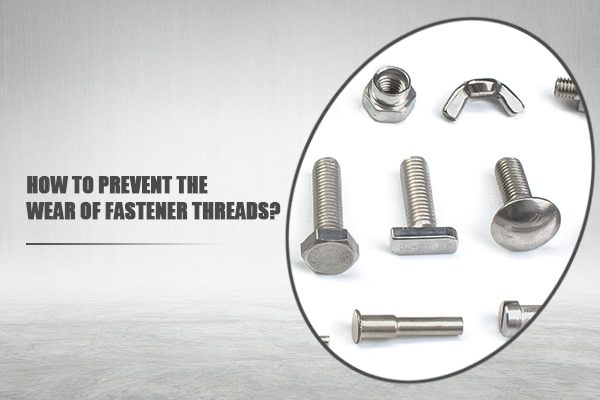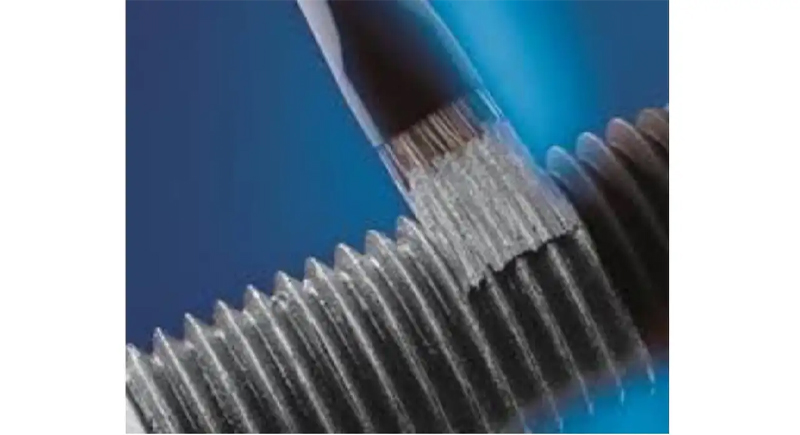VIDEO & CENTER


Thread wear is a common but rarely understood problem in fasteners by engineers and manufacturers. This occurs when pressure and friction cause the bolt's threads to get stuck in the threads of the nut or the threaded hole. The fastener is not only over-tightened but also undergoes "cold/contact" welding.
Causes of wear
This wear usually happens when the protective oxide layer of the metal fastener is worn away during installation due to the increased pressure and heat between the threaded surfaces. Without an oxide coating, the original metal threads directly contact each other without any obstacles, causing the nut and the bolt to "fuse" together. Before use, you should inspect all the fasteners, but they still fail after installation. The basic measures are as follows: Prevention
1) Determine the appropriate tightening speed and correct assembly method
A lower installation speed can often reduce or even completely prevent the problem of wear. As the installation speed increases, the friction force also increases, which leads to heat generation and thus wear. Additionally, over-tightening will also increase friction and wear.
2) Use lubricants and coatings as much as possible
Lubricating the internal and/or external threads can reduce friction, as friction is the main factor causing wear. Before choosing a lubricant, it is essential to consider the final use of the fastener. If there is concern about food or laboratory purity, some lubricants may be unacceptable. Moreover, the fastener installer must consider the changes in the torque-tension relationship caused by the use of lubricants, as over-tightening can also lead to wear.
Effective lubricants include:
Molybdenum disulfide is a high-temperature lubricant that can be used to prevent metal contact and minimize wear. Molybdenum disulfide is typically used when normal lubricants and engine oil cannot meet the actual working temperature of the fastener.
Film lubricants containing silver, aluminum or copper can be used to reduce the friction coefficient. Most anti-sticking agents used on the assembly line contain these metal particles.
Machinable coatings such as polytetrafluoroethylene, polyvinylidene fluoride, PFA and FEP are another option. These are fluoropolymer coatings that mix resin and fluoropolymer lubricants to provide low friction, chemical resistance and corrosion resistance, as well as non-wetting and release or non-stick properties below 550°F.
Examples such as German Gleitmo (Kerlite Mo) fastener water-based solid dry film lubricant, commonly known as a friction coefficient stabilizer or German water wax, may also be effective.
3) Selection of fastener thread
Smooth surface textures will result in smaller friction resistance. Thread rolling usually provides a smoother surface than threading, which reduces the friction that may cause wear. Additionally, using coarse thread is also helpful. Coarse threads have a larger thread clearance, while fine threads have more friction surfaces.
4) Selection of different metal materials (hardness)
Another technique to reduce wear is to use fasteners of different hardness. By doing so, the protective oxide layer of one material is more likely to wear, thereby preventing the wear of the oxide layer of the other material. However, it must be noted that electrochemical corrosion may occur between different materials, especially when the fastener is exposed to liquid media.
In addition, wear is not only generated during the installation process.
Although stainless steel, aluminum and titanium fasteners are more prone to wear during installation than certain special alloys, the wear problem is not only present when tightening the bolts. Thread friction still generates wear during the product's use after assembly, and then continues to cause thread wear problems. This requires selecting appropriate fasteners and connection methods for different products and applications and setting the correct maintenance and repair methods.














